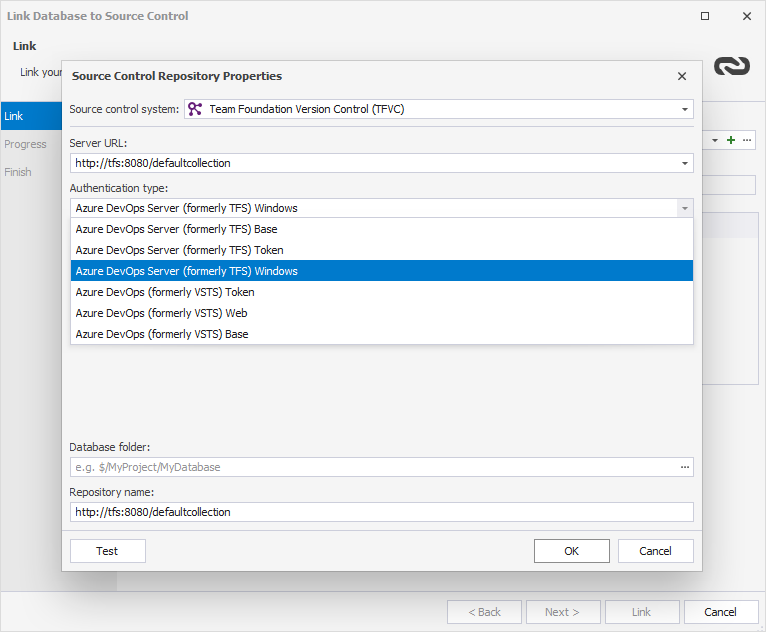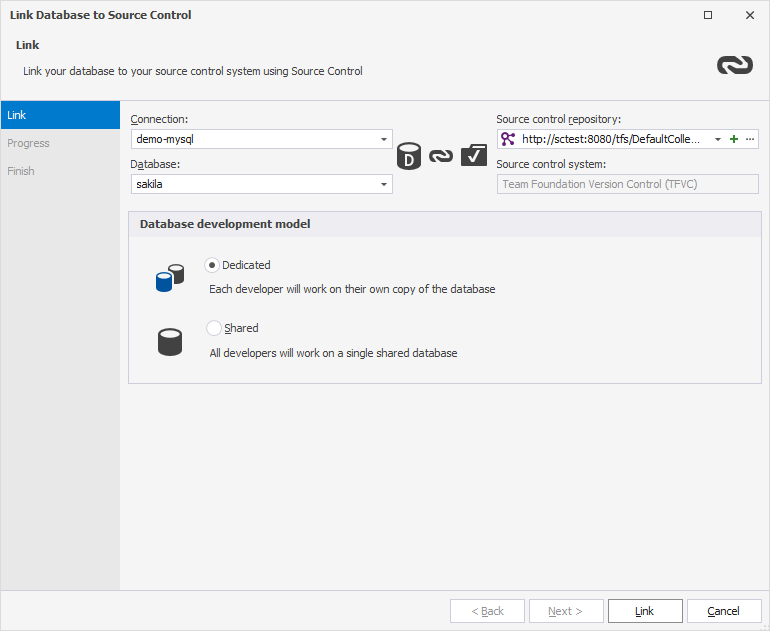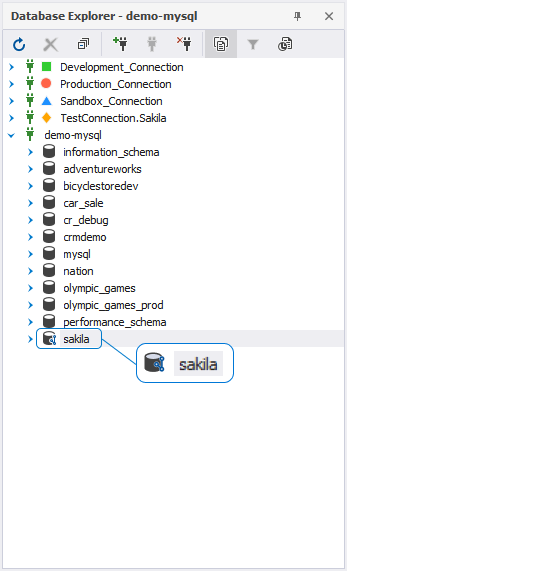Link a database to TFVC
This topic explains how to link a database to Team Foundation Version Control (TFVC).
To link a database to TFVC
1. In Database Explorer, right-click the database you want to link to source control and select Source Control > Link Database to Source Control.
Alternatively, navigate to the main Database menu and select Link Database to Source Control.
2. On the Link page of the Link Database to Source Control dialog, click ![]() Create New Repository in the Source control repository field.
Create New Repository in the Source control repository field.
Note
The previously linked repository will be selected by default.
3. In the Source Control Repository Properties dialog that opens, select Team Foundation Version Control (TFVC) as a source control system from the Source control system dropdown list and do the following:
- Specify Server URL.
- Choose Authentication type.
- Depending on the authentication type you choose, specify User name and Password for the TFVC server or Token. The default authentication type is Azure DevOps Server (formerly TFS) Windows, which uses Windows authentication for TFVC login.
- Specify the path to Database folder. To do this, click
 Browse to choose the folder where SQL scripts will be stored.
Browse to choose the folder where SQL scripts will be stored.
Note
The database folder to which you want to connect must exist on the server. Otherwise, the connection to source control will fail. For more information, see How to resolve the TFVC issue - No folder on the repository.
- Optional: The Repository name is automatically derived from the server URL. However, you can specify a different name of the repository.
Note
Contact your system administrator to get proper settings for the server URL, username, and password.

4. Optional: Click Test to verify that the database can be successfully connected to source control.
5. Click OK to apply the changes and close the Source Control Repository Properties dialog.
6. Select a database development model: dedicated and shared.
7. Click Link to establish the connection between the database and source control.

The Refresh progress window opens automatically showing the stages of the refresh operation. The linked database gets the following icon in Database Explorer:

Note
If you get the error - Can not find local client for TFVC error, and cannot link a database to TFVC, install Team Foundation Server Object Model: